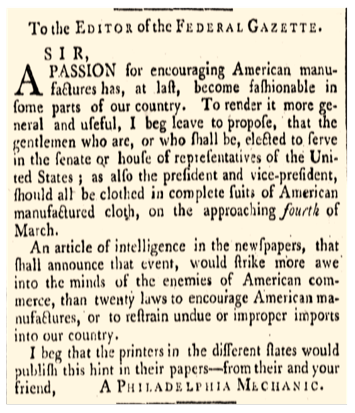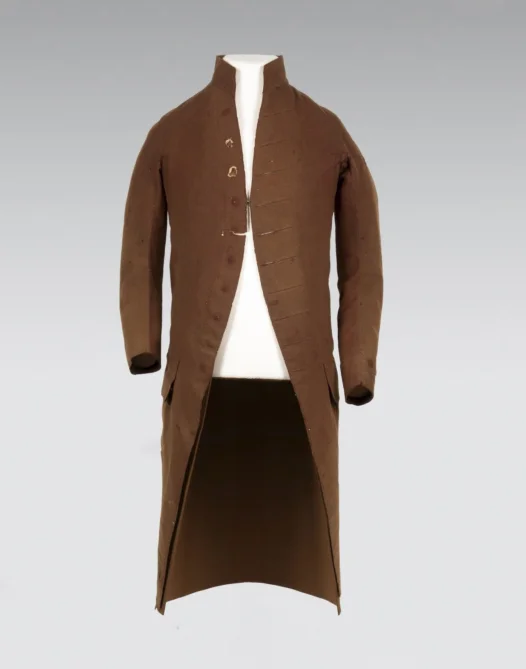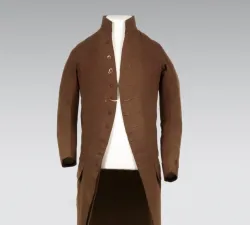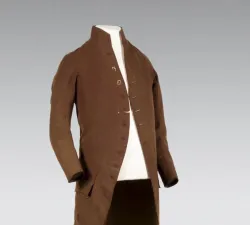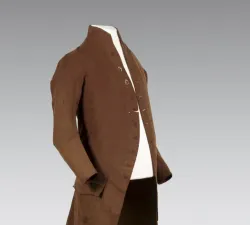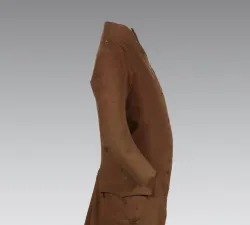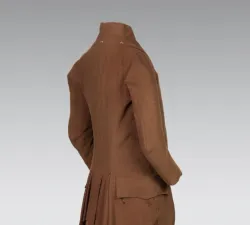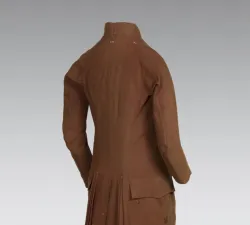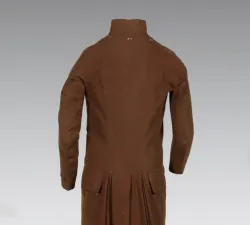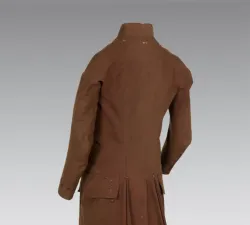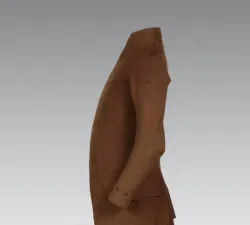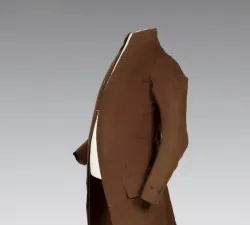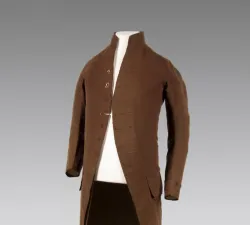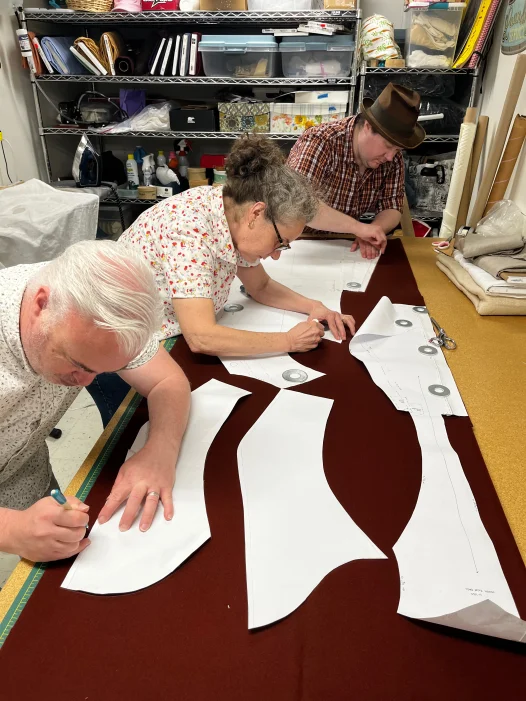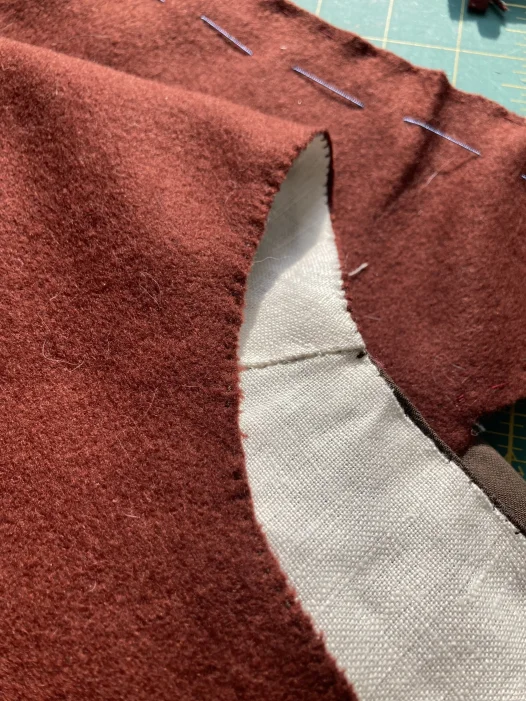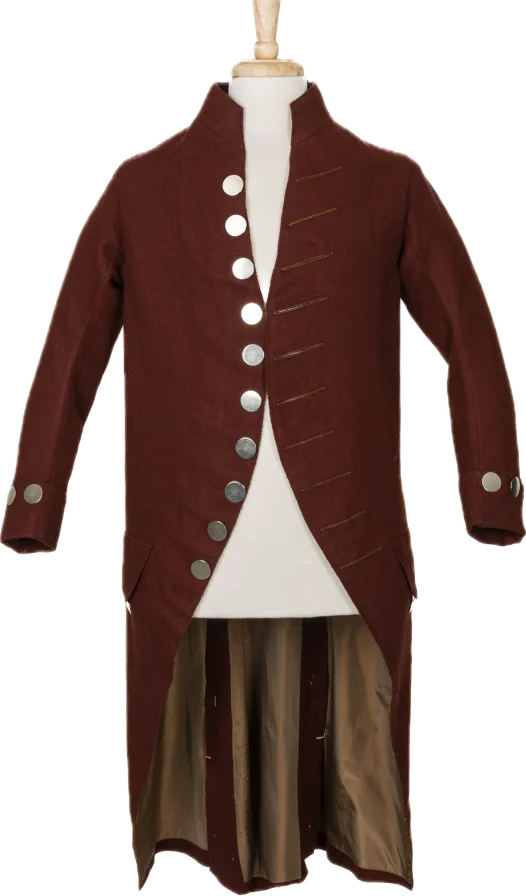Mount Vernon’s recreation of George Washington’s inaugural suit celebrates American craftsmanship, brought to life with Pendleton Woolen Mills’ quality wool.
George Washington’s inaugural suit was more than attire; it was a statement of national identity. In early 1789, as Washington prepared for his first inauguration, he was influenced by a call from a "Philadelphia mechanic" published in The Federal Gazette (pictured), urging American statesmen to wear domestically produced clothing. Washington, ever conscious of his role as the nation's leader, took this suggestion to heart, commissioning a suit crafted from American wool. The suit itself included a frock coat, waistcoat, and breeches, combining essential elements of an 18th-century gentleman’s formal attire.
At the time, the Hartford Woolen Manufactory in Connecticut had just begun producing high-quality woolen fabric. Washington, keen on supporting American industry, went through a meticulous process to secure cloth that met his specifications in quality and color. With the help of Henry Knox, Washington’s close friend and former quartermaster then secretary of war, the fabric made its way from Connecticut to Mount Vernon.
The journey wasn’t straightforward: After Washington’s merchant contact in Philadelphia failed to secure the material, Knox took on the task himself, communicating directly with the Hartford Manufactory to ensure the delivery. The fabric finally arrived in Alexandria, Virginia, in early April, just days before Washington was to depart for New York. Once at Mount Vernon, it is believed Washington’s indentured tailor, Cavan Boa, quickly fashioned the fabric into a suit—a true race against time as Washington’s inauguration date drew closer. The completed suit, worn during his inaugural oath, not only conveyed Washington’s pride in American industry but also sent a symbolic message of unity and self-sufficiency for the new nation.
"I shall allways take a peculiar pleasure in giving every proper encouragement in my power to the manufactures of my Country."
- George Washington, April 8, 1789
Read the LetterThe Coat’s Journey to Mount Vernon’s Collection
After Washington’s death, the frock coat of the inaugural suit was passed down through generations, eventually finding its way to Mount Vernon in 1933. Kathrin Breitt Brown, Mount Vernon’s historical costumer, notes the coat is a “well-made but hastily finished” garment, reflecting the demands of the moment. She explains that Boa likely had assistance in completing the work on time, as evidenced by small irregularities in the garment’s construction.
The coat’s buttonholes hold clues to its authenticity. When the suit arrived, Washington had noted a need for more buttons in specific sizes to complete the look, even specifying he wanted six engraved large buttons. Breitt Brown observes that the frock coat’s cuff buttons were applied after the coat was finished, matching Washington’s instructions and distinguishing the coat as the inaugural frock. She can tell that these buttons were added later because the shank of each button pierced all layers of the cuff fabric, a practice uncommon unless done as an afterthought. This feature helps confirm that this frock coat, rather than others Washington may have worn, is indeed his inaugural coat.
Years of study on the coat have revealed details about its color, fabric quality, and finishing touches. Breitt Brown notes that the suit’s color, known as “London Brown” in England, became “Congress Brown” in the United States—a rebranding that resonated with Washington’s intent to support American-made materials.
The Reproduction Effort
In 2023, Breitt Brown was called to recreate Washington’s inaugural suit, a task she approached with deep reverence and a sense of purpose. She reached out to Williamsburg’s master tailor, Mark Hutter, and together they embarked on a complex and highly detailed endeavor. The suit’s original pattern, preserved through conservation studies, provided a roadmap, and years of additional documentation, including Washington’s original letters, offered historical breadcrumbs to ensure their reproduction was as close to the original as possible.
To achieve the historical accuracy and quality required, Breitt Brown needed a fabric that closely matched the original broadcloth wool—a role perfectly suited to Pendleton Woolen Mills.
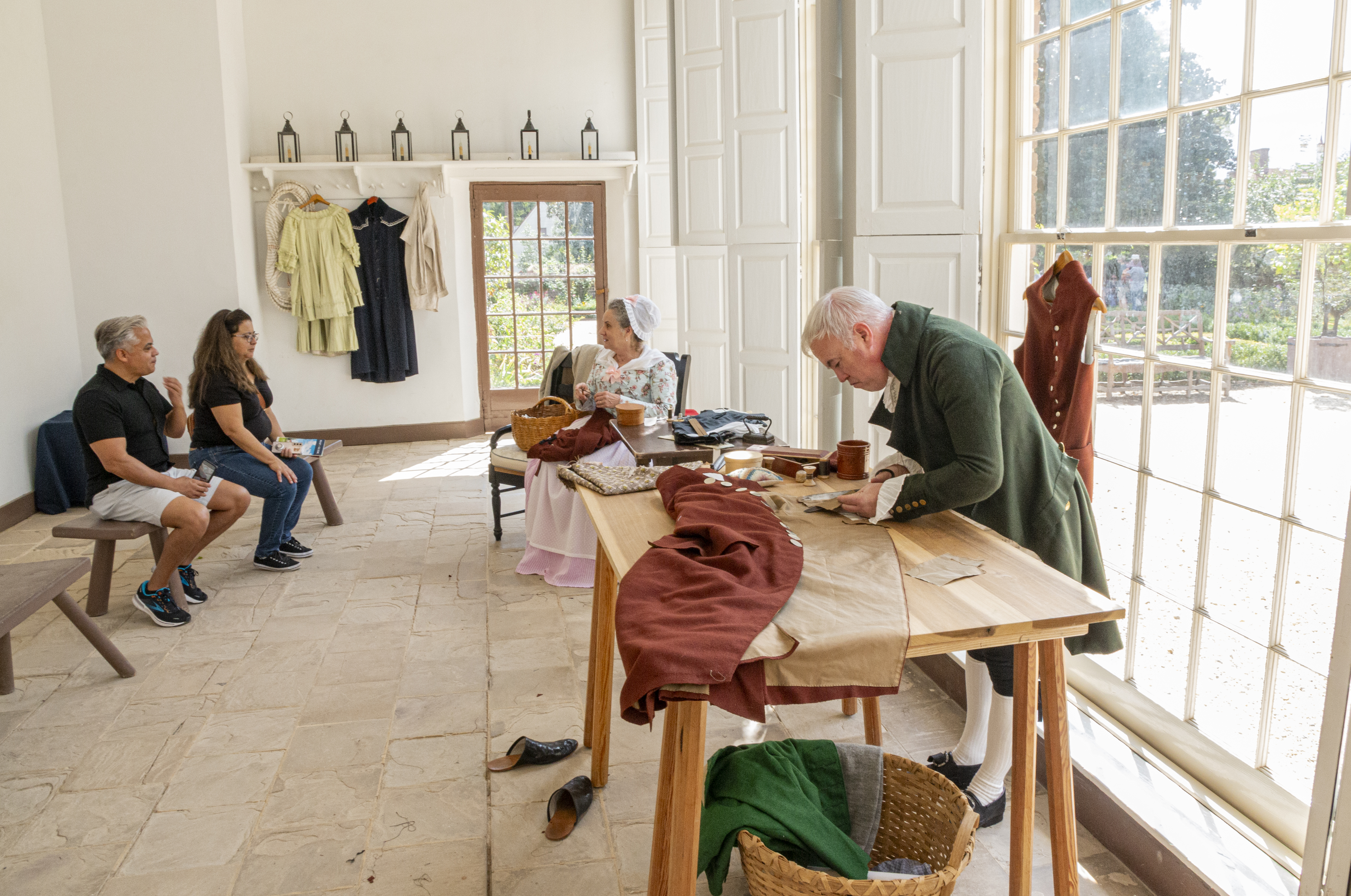
Pendleton Woolen Mills: American Fabric for an American Icon
The inspiration to use Pendleton fabric in the reproduction came from Mary Lang Bishop, Vice Regent for Oregon and a member of Pendleton Woolen Mills’ founding family. As an American company with roots dating back to the 19th century, Pendleton is synonymous with quality woolen goods, making it the ideal choice for this historic project. Hearing about Breitt Brown’s project, Bishop generously donated approximately nine yards of Pendleton’s wool flannel to help Mount Vernon’s historical costuming team bring Washington’s vision to life.
Located in Portland, Oregon, Pendleton Woolen Mills specializes in wool fabric with durability and texture perfect for recreating Washington’s suit. Beyond its aesthetic and practical benefits, Pendleton’s fabric provided Breitt Brown with the flexibility needed to capture the essence of Washington’s original garment. “The hand of Pendleton’s fabric,” Breitt Brown explains, “is exquisite. It’s supple, responsive, and shapes beautifully under an iron.” This quality is crucial in the careful construction of elements like the coat’s collar, which needs just the right fit.
Bishop’s donation extended beyond the inaugural suit project, with additional Pendleton wool designated for other historic garments at Mount Vernon. This ongoing support not only breathes new life into Washington’s inaugural suit but also allows Mount Vernon’s interpreters to wear historically accurate winter garments made from Pendleton wool, further enhancing the immersive experience for visitors.
Breathing New Life into History: A Collaborative Success
The reproduction project involved the creation of two suits, both to be used in a new museum gallery about Washington’s life. One suit was made by Breitt Brown and Hutter for the tableau display of Washington taking the oath of office, and another will be crafted by Hutter for the “appearance gallery,” which will highlight Washington’s careful consideration of his image and the messages conveyed through his clothing, giving visitors a deeper understanding of his legacy.
For Breitt Brown, the experience of recreating this iconic suit is profoundly moving. “It brings tears to my eyes to think about how important that piece of clothing is and how well I know it,” she reflects. The connection between the hands that crafted Washington’s original suit and those that recreated it more than two centuries later underscores the enduring power of American craftsmanship.
This historic suit, reborn with the support of Pendleton Woolen Mills, inspires future generations and pays homage to George Washington’s original message of independence and American self-reliance.
Historic Trades
Mount Vernon's historic outbuildings house the many important trades that sustained the bustling plantation.
Learn More